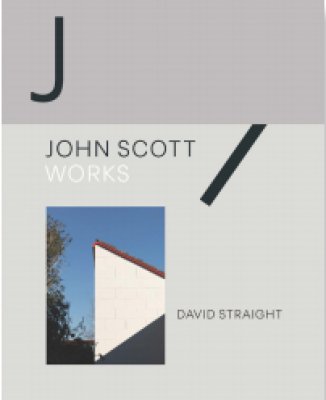Andrew Paul Wood – 13 May, 2019
The joy of the publication is that it brings to attention the other seminal projects, starting with the Courbusier-meets-bach of Falls House (1953) in Havelock North, the delight in corrugated iron vernacular of the Martin Bach in Hokitika (1974-5), the relaxed take on a Frank Lloyd Wright fireplace in the Martin House at Bridge Pā (1969-1970), the suggestion of Arts and Crafts in the interior of the Ngamatea Homestead (1981 - a sort of rustic brutalism), and the dramatic brutalist gothic of St Canice's Church in Westport (1975).
John Scott: Works
David Straight (editor), with Bill McKay and Julia Gatley, Hana Scott, Douglas Lloyd Jenkins and Gregory O’Brien.
Massey University Press, 2019
ISBN: 978-0-9951095-2-0
RRP: $70
I can think of few tributes more appropriate to the architect John Scott (Taranaki, Te Arawa, 1924-1992) than this elegantly volume John Scott: Works designed by Catherine Griffiths. It chimes well with Scott’s aesthetic of angles and asymmetrical balance—and I love the three-quarter dust jacket. That’s even before getting into the essays by Bill McKay and Julia Gatley, Hana Scott (John’s granddaughter and architect in her own right), Douglas Lloyd Jenkins, and Greg O’Brien judiciously brought together by architectural photographer David Straight.
This is primarily a book of Straight’s photographs of Scott’s buildings, and while his camera deftly picks out the elements of each structure, I am a little disappointed that there weren’t individual in-depth texts about each building for context. That said, this isn’t a monograph, and Straight writes as well as he photographs, incisive and poetic as necessary, in his introduction, opening on the final days in 2016 of Scott’s Aniwaniwa Visitor Center (1970-1976) in Te Urewera before its controversial demolition.
Of Scott’s genius, there is no doubt. Wellington’s Futuna Chapel (1958-61) is, to re-appropriate a much overused and abused word, iconic in its definitive blend of Polynesian and modernist vocabularies. An entire book can be written on that alone (and the shamelessly shabby way it has been treated by planners and developers), so I can’t be too precious about what is put in and left out.
The joy of the publication is that it brings to attention the other seminal projects, starting with the Courbusier-meets-bach of Falls House (1953) in Havelock North, the delight in corrugated iron vernacular of the Martin Bach in Hokitika (1974-5), the relaxed take on a Frank Lloyd Wright fireplace in the Martin House at Bridge Pā (1969-1970), the suggestion of Arts and Crafts in the interior of the Ngamatea Homestead (1981—a sort of rustic brutalism), and the dramatic brutalist gothic of St Canice’s Church in Westport (1975).
I probably wouldn’t have devoted as much space to the faux-hacienda excesses of the Vaughan House (1985), but I am grateful for the chance to see how good the bones and proportions were of the Aniwaniwa build. It must have been quite something to have seen Colin McCahon’s Northland Panels (1958) on display there back in the day. Appropriately enough, the main section concludes with Scott’s final major project, the Scott/Wheeler House (1987-90) in Haumoana, Hawke’s Bay. It is the perfect coda as it brings together so many of his ideas in a harmonious intersection of masses and volumes.
McKay and Gatley do the onceover of Aotearoa regional modernism without suggesting anything too radical that might scare the horses, while Hana Scott writes movingly about her whānau and the influence underpinning her grandfather’s aesthetic philosophy. Possibly the liveliest part is Lloyd Jenkins’ (and here I must pause to offer condolences—for this publication coincides with the passing of his partner, the writer and filmmaker Peter Wells) rather wonderful look at three of the families who commissioned houses from Scott and their stories of collaborating with him.
I love it when clients are treated as an intrinsic part of a building’s design, and not just an inconvenience to be negotiated and ignored. O’Brien contributes a poetic and expressive meditation on the condemned Aniwaniwa Centre—another special touch that one wouldn’t find in most architecture books— opening up new pathways in the way we can write seriously about the built environment.
All in all, this is a very worthy publication to have in the home library. It sits well as a useful adjunct to the website dedicated to the architect, although I’m really hanging out for a definitive monologue.
Andrew Paul Wood

 Advertising in this column
Advertising in this column Two Rooms presents a program of residencies and projects
Two Rooms presents a program of residencies and projects



This Discussion has 0 comments.
Comment
Participate
Register to Participate.
Sign in
Sign in to an existing account.